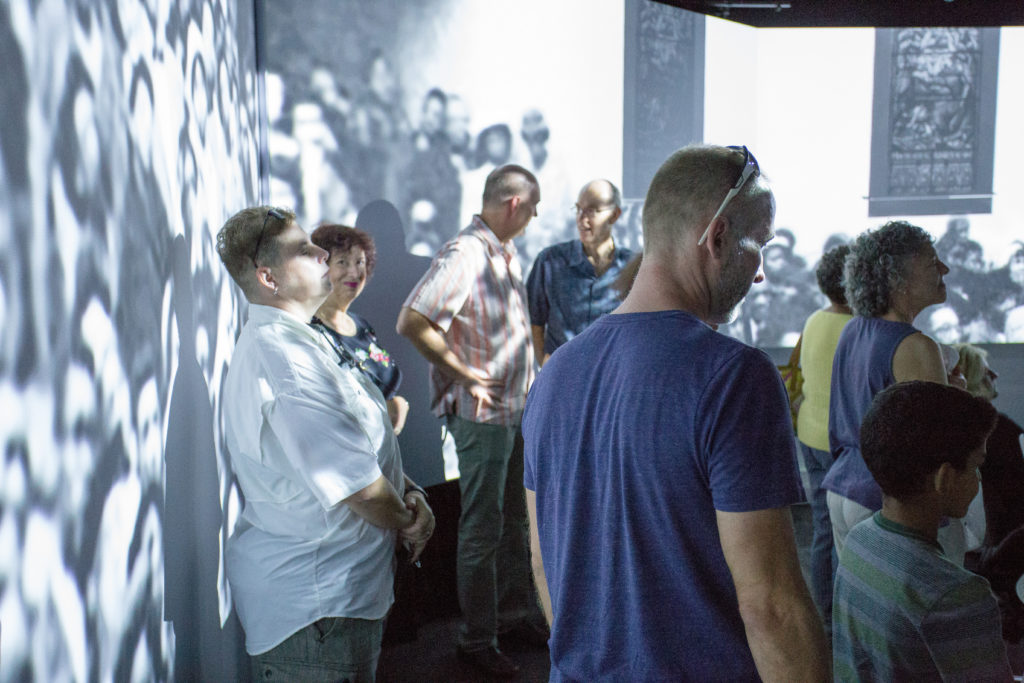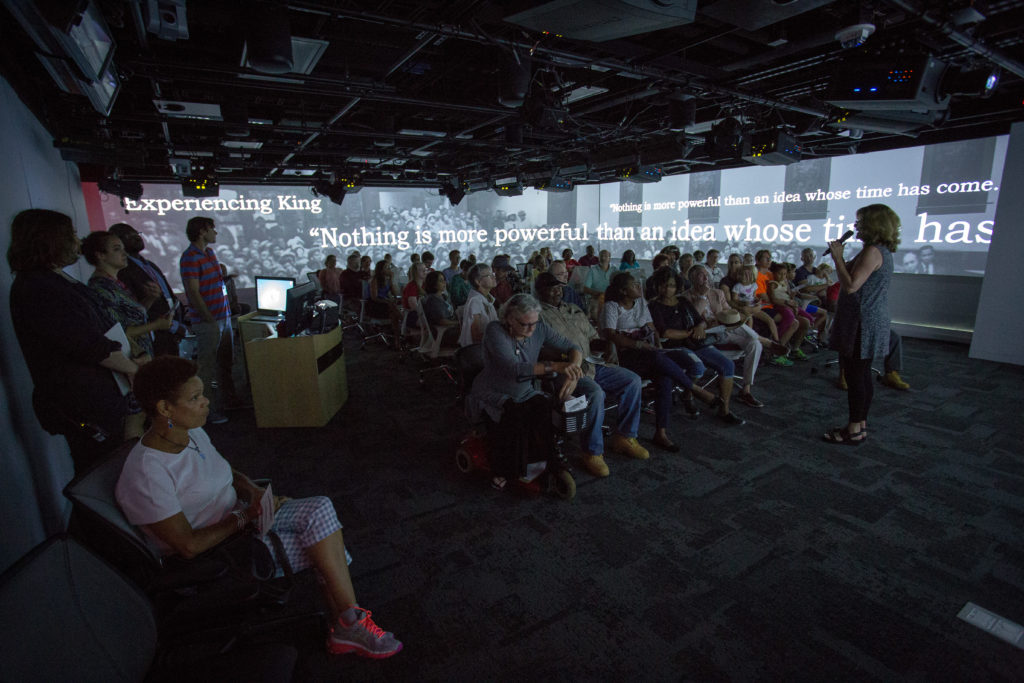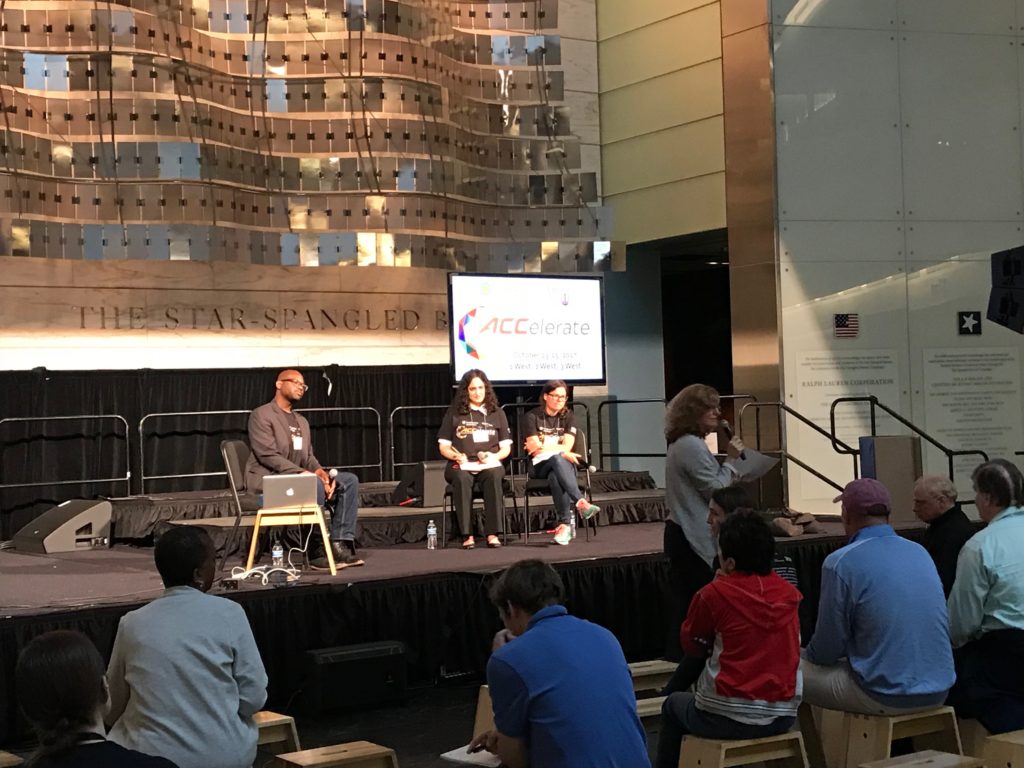Collective Sound
Collective Sound
The collective sound experience focuses on how sound functions to immerse listeners into a moment in history, providing a sense of how and to what extent an experience of public address is a fully embodied experience. Audiences engage in guided listening of the different sound experiences of King’s 1960 speech, “A Creative Protest [Fill up the Jails].”
Cite this page as: vMLK Project Team. Virtual Martin Luther King, Jr. Project. 2019. Retrieved from https://vmlk.chass.ncsu.edu/experience/collective-sound/
Listen to the audience perspective from the floor
Collective Experience of the Virtual MLK Project
The collective sound experience demonstrates the location-based function of sound by focusing attention on how the sound of King’s voice (as re-created by Mr. Blanks) and of the congregation (the people who gathered for the re-creation event) function to immerse visitors/audiences in the experience of the speech. When audience members are physically close to the image of King at the front of the sanctuary they hear his voice as if they were sitting directly in front of him on that night in 1960. If they move to the center of the room, they hear his voice at more of a distance and they hear the congregation around them, engaging in call and response with the speaker. As they move to the back of the room, they hear the amplification of the speaker’s voice and the voices of the congregation more in front of them than around or beside or in back of them, signaling to the visitors the distance between their own bodies and both the voice of the speaker and the rest of the congregation. In this way, visitors are guided to consider how their position or location in the space — and more generally, how one’s physical relationship to the sound of the speaker and to others –impacts their experience of the speech. The collective listening experience of the vMLK project thus demonstrates how the connection between sound and image acts powerfully on the body to bring about an attention and awareness that invites a response.
In debriefing the vMLK sound experience with visitors and audiences, several things become evident. Individuals report that they have a preference for where they sit and that this preference is tied to how they are impacted physically in their bodies by the relational quality of the sound in the different locations. Some prefer to sit “close” and to feel the resonance of the speaker’s voice, something that they can experience when they are “close” to visual representations of King. Others prefer having the sound of the congregation around them in the middle of the room. Hearing the call and response more clearly and directly as well as the voice and words of the speaker immerses them more powerfully, they report, in the speech. These visitors also report how impactful it is to hear the speech with others around them, and to hear/listen to it as compared to reading it as a text.


